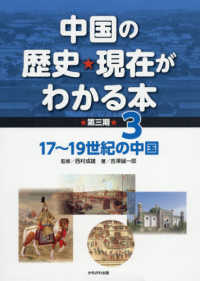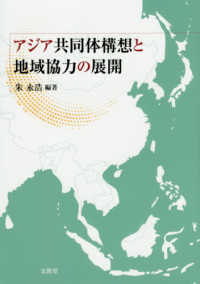- ホーム
- > 洋書
- > 英文書
- > Performing Arts
Full Description
Modern Chinese theatre once entailed a variety of forms, but now it primarily refers to spoken drama, or huaju. Backstaging Modern Chinese Theatre looks beyond scripts to examine visuality, acoustics, and performance between the two World Wars, the period when huaju gained canonical status. The backstage in this study expands from being a physical place offstage to a culturally and historically constructed social network that encompasses theatre networks, academies, and government institutions—as well as the collective work of dramatists, amateurs, and cultural entrepreneurs. Early huaju was not a mere imitation of Western realist theatre, as it is commonly understood, but a creative synthesis of Chinese and Western aesthetics. Charting huaju's evolution from American colleges to China's coastal cities and then to its rural hinterland, Man He demonstrates how the formation of modern Chinese theatre challenges dominant understandings of modernism and brings China to the center of discussions on transnational modernities and world theatres.
Contents
List of Illustrations
Acknowledgments
Introduction
Chapter One: When S/He is not Nora: Chinese Theatres and Cosmopolitan Students in Post-World War I America
Chapter Two: Script to See: Spectatorial Subjects and Enlightened Eyes in Chinese Realist Theatres of the 1920s
Chapter Three: Out of the Box-Stage: Huaju's Relocation to the Rural Modern
Chapter Four: Institutional Theatrics: Techniques, Prompts, and Plays to Serve the Nation
Chapter Five: Canonizing the Backstage: Gossip, Annals, and the Politics of Making Theatre History
Conclusion
Notes
Bibliography
Index








